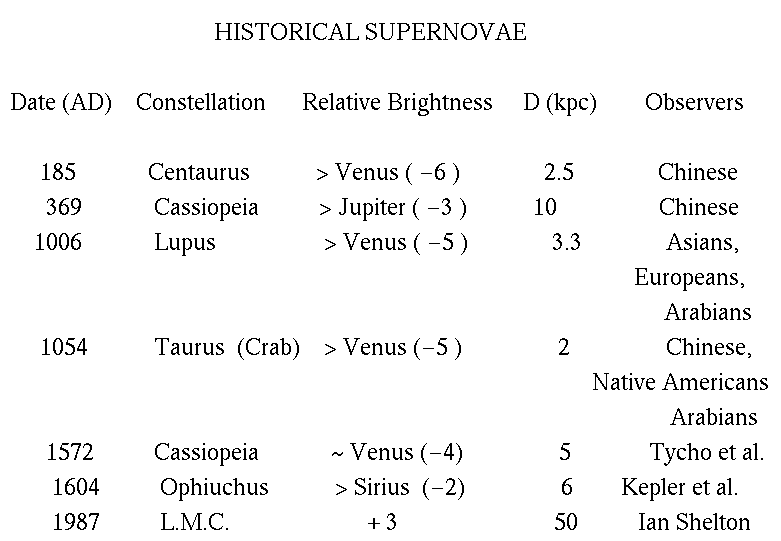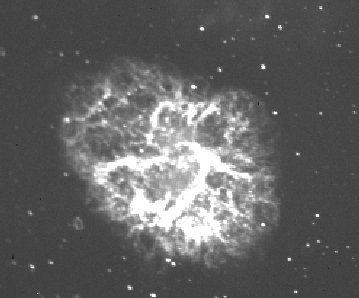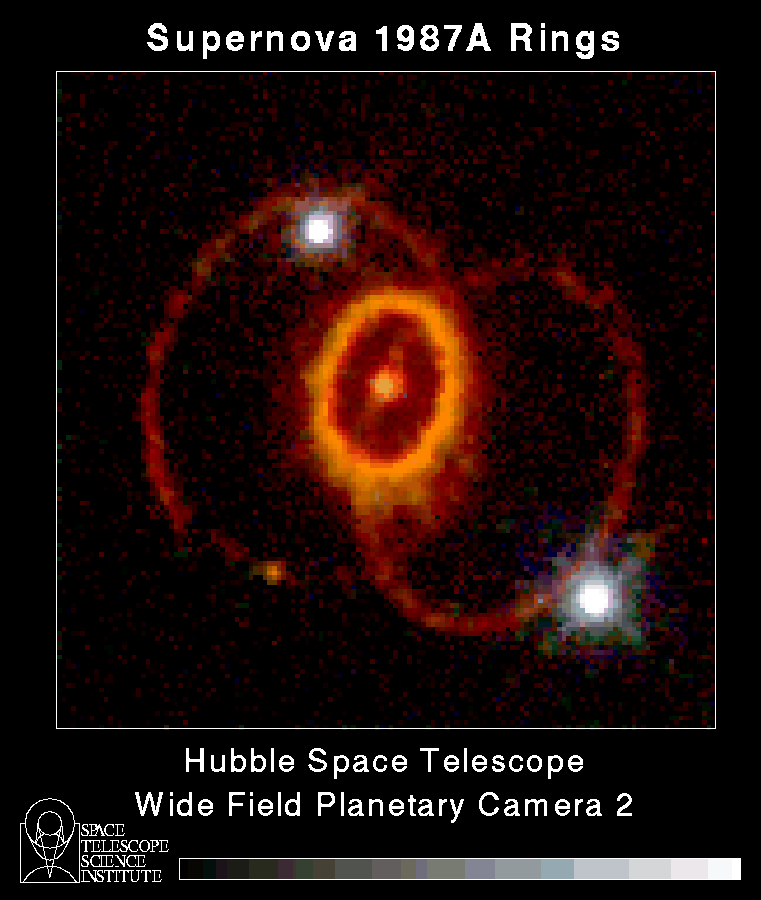-
Historical Supernova means a supernova which was
visible with the unaided eye ===> the supernova occured nearby.

Supernova Rates

|
 |
The energy that went into the explosion produces a Supernova Remnant. When a massive star explodes, it leaves a remnant of a few times the mass of the Sun; a large fraction of the material is thus thrown outward at high speeds. The material as it sweeps through the surrounding gas, shocks, heats and starts to radiate producing the nice arcs and rings seen in the pictures. Initially, the expanding shell is presumably composed of the outer parts of the star and moves at speeds of 2,000-10,000 km s-1. As the shell sweeps up surrounding gas, it gets more massive and slows down. Eventually, it just merges into the background ISM. Typical remnants may live up for up to 100,000 years (long, but still short on the astronomical time scales).
The Crab Nebula, the SNR shown in the middle panel below as produced by the SN which went off in Taurus in 1054 A.D. Today, nearly 1,000 years after the explosion the material (ejecta) is still flowing outwards at a rate of 1,450 km s-1.In the panel to below left (and above) is shown the SNR known as the Cygnus Loop. The SN which produced the Cygnus Loop occurred around 15,000 years ago. In the far right panel is shown the SN1987A SNR. The bright rings are produced by the collision of the ejeta from the explosion and material which left the progenitor star perhaps 20,000 years ago.
 Cygnus Loop II |
 Crab Nebula |
 SN 1987A |